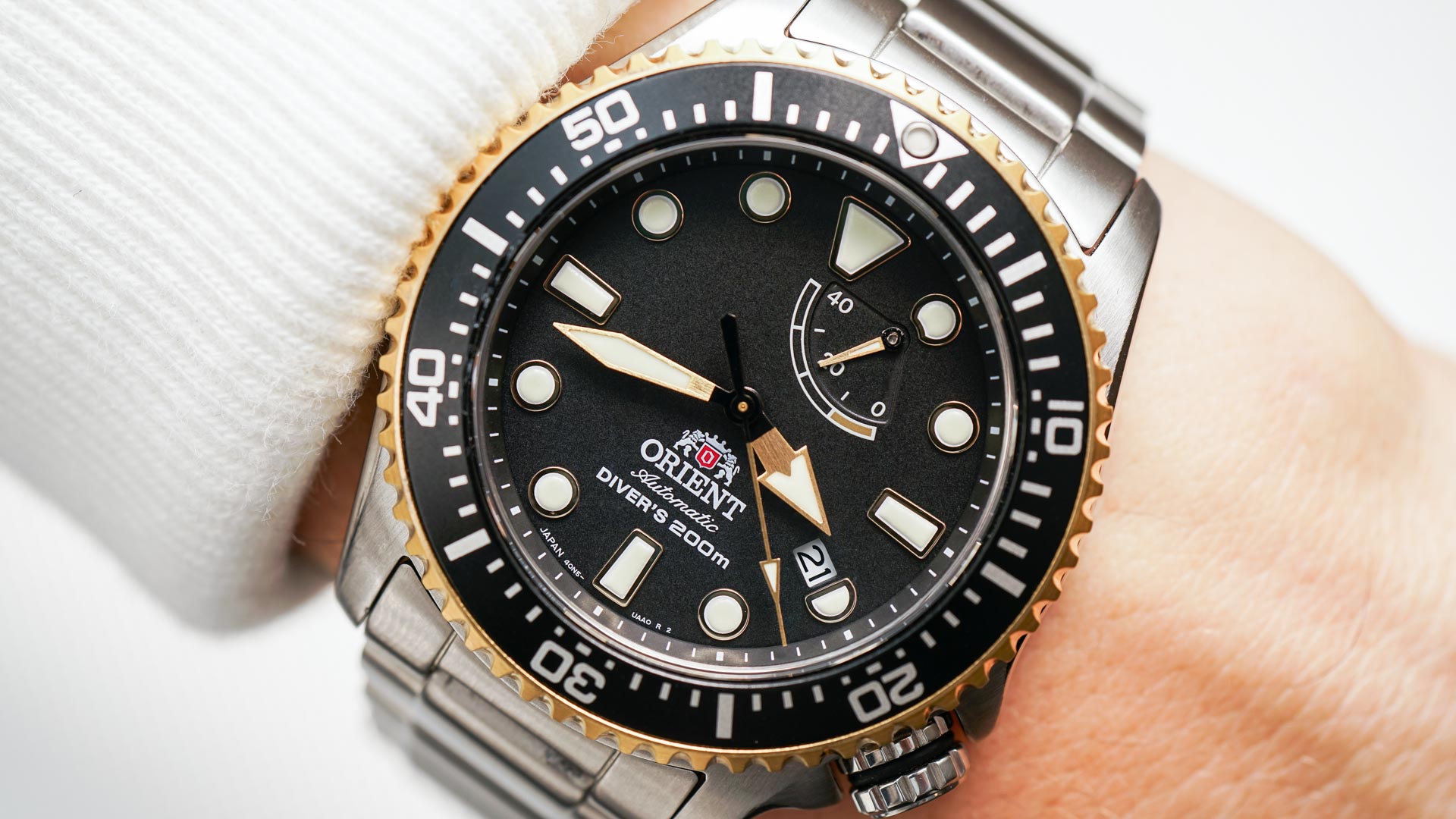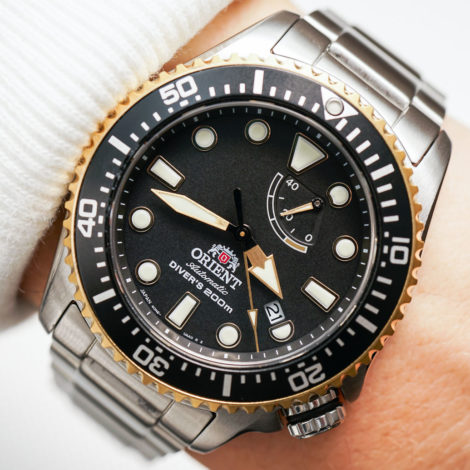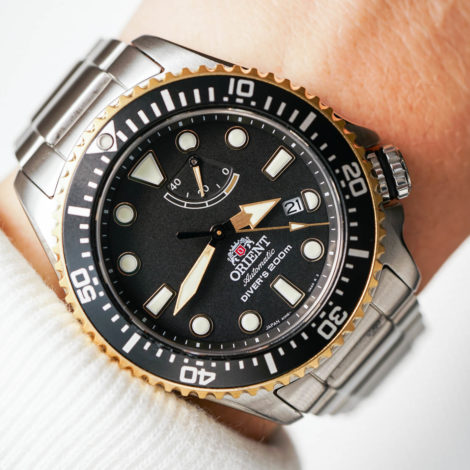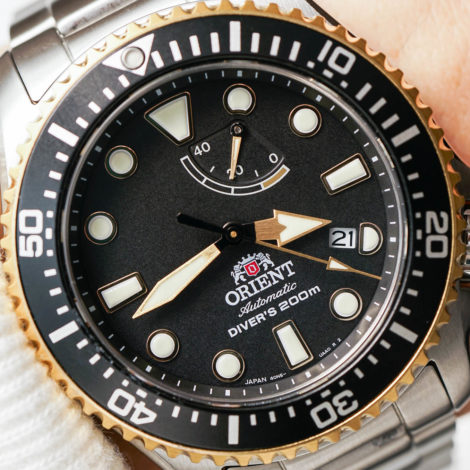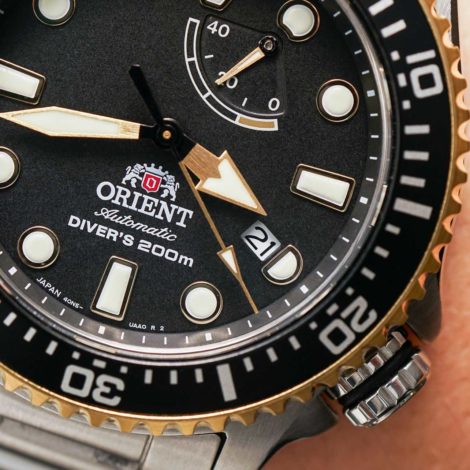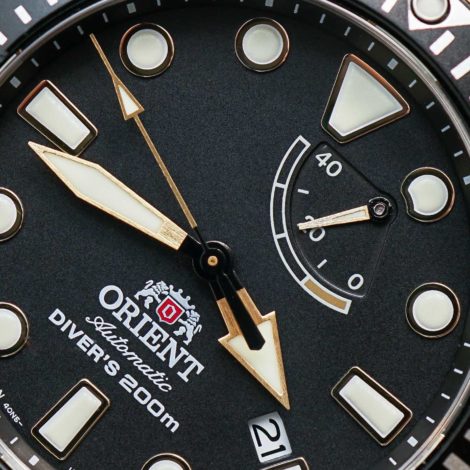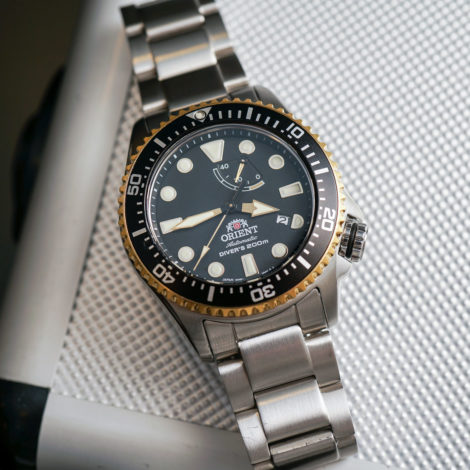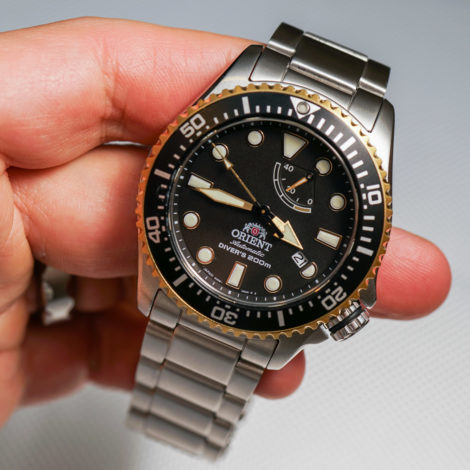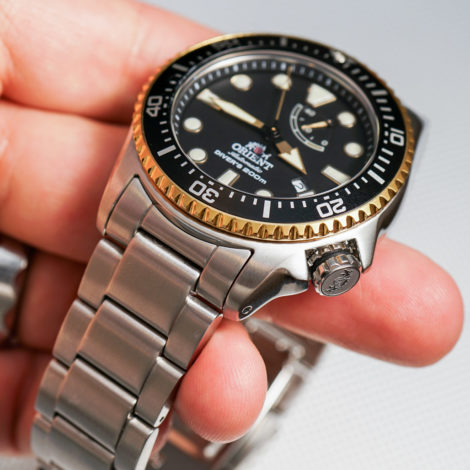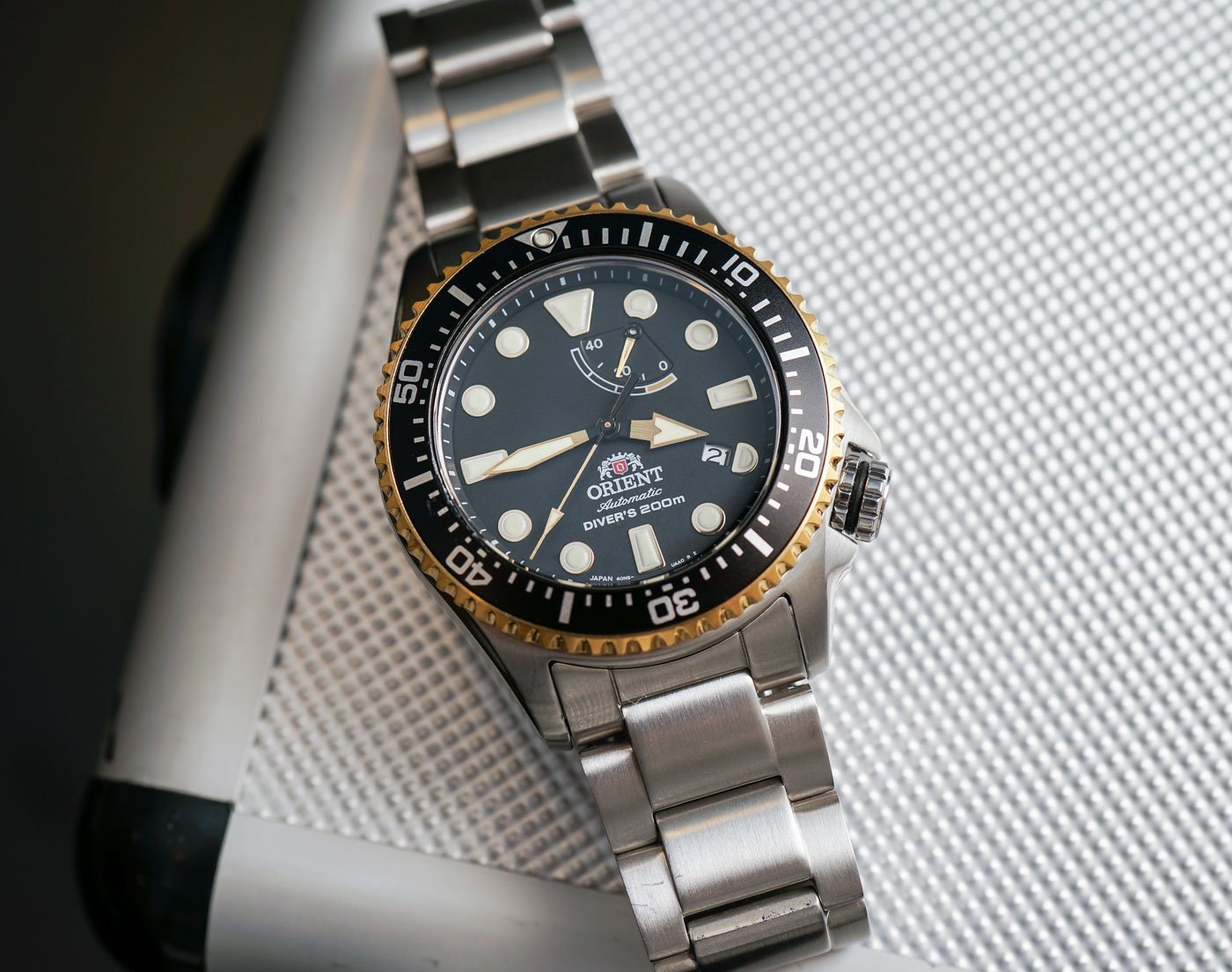
Generally, when I start to think about budget dive watches, my mind drifts immediately to Seiko’s many offerings. This, however, really robs me of some great options — most notably, perhaps, from Orient. Back in 2018, Orient released its Orient Triton Diver, which slots in nicely above the Mako II and Kano, both of which offer a ton of bang for the buck in their own regard. The Triton was designed to replace the slightly more tool-y Orient M-Force. They tamed the watch down quite a bit in a bid probably to appeal to a broader audience. The Triton is available in a variety of classic colorways; for this article, we are specifically looking at the two-tone version that features a gilt dial.
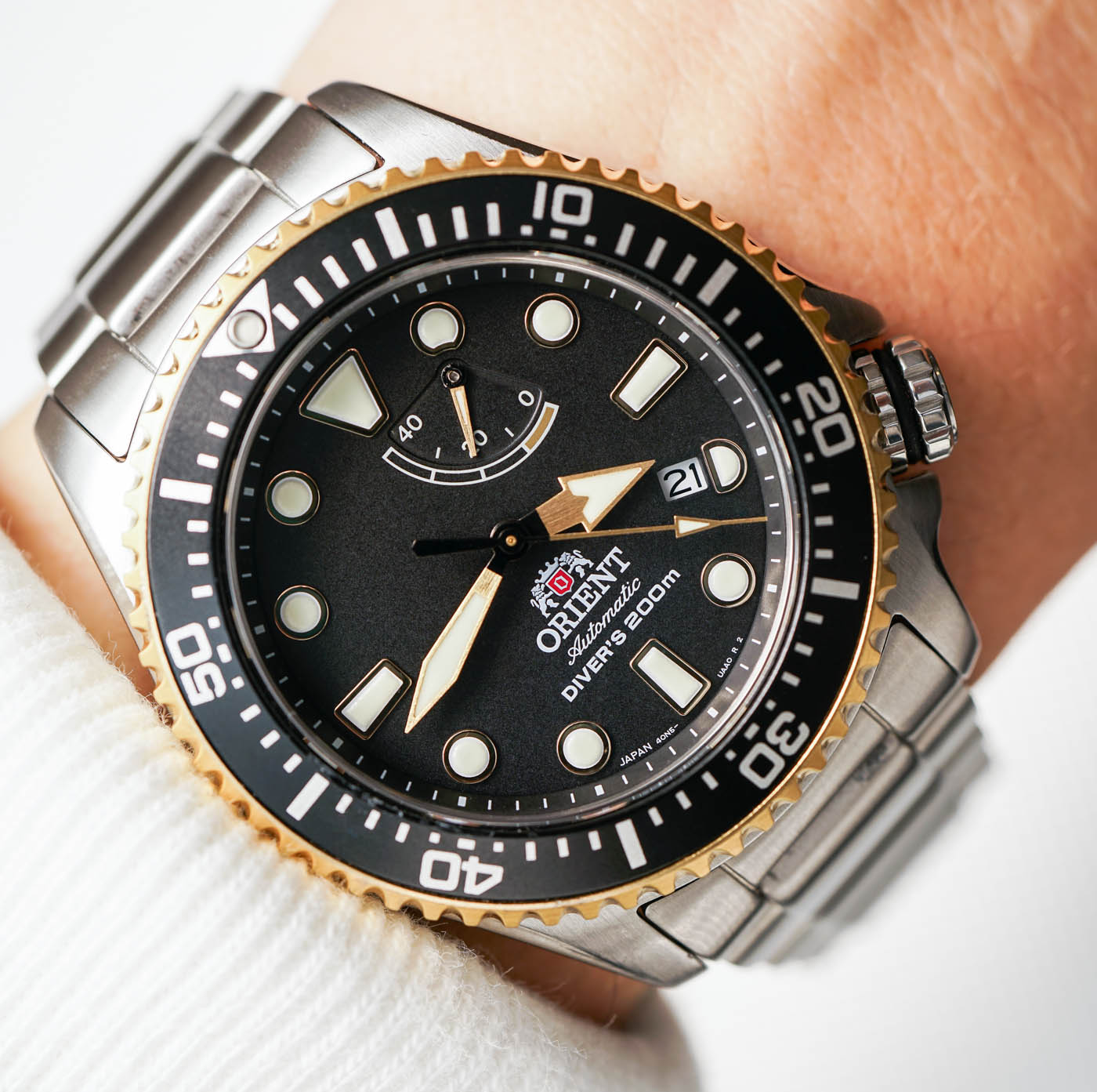
There’s a lot to love about these watches: that big matte-black gilt dial with the spear-shaped minute and arrow hour hands, plus, the inclusion of a power reserve complication. This isn’t something that you generally see on watches at this price point. It also really speaks to the in-house nature of Orient’s movements. Orient doesn’t use any movements made outside its manufacture; everything is made in Japan by Orient. This gives the brand a little leeway to create movements and complications to suit its own desires and aesthetics.
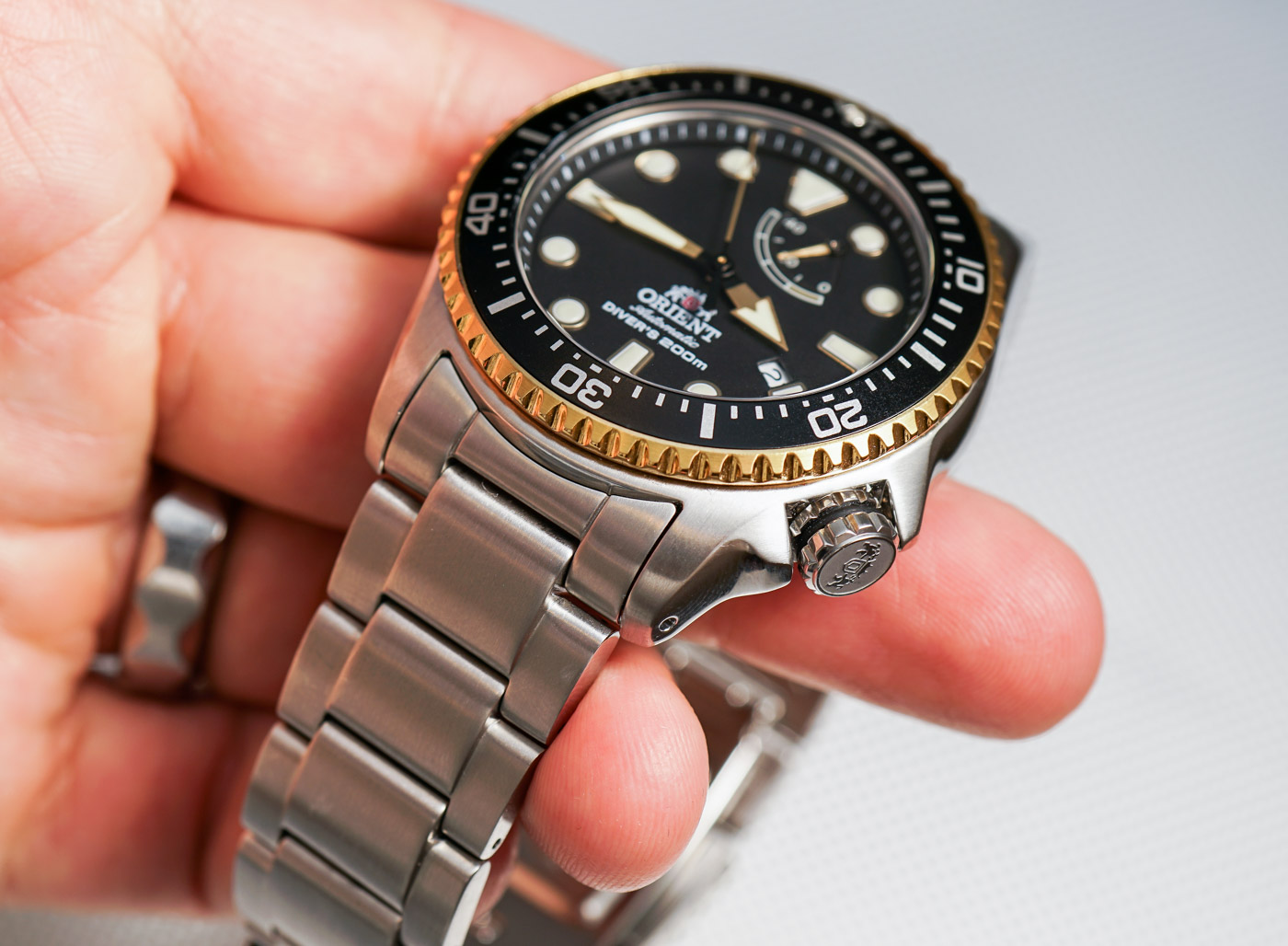
The watch comes in a 43.4mm steel case and measures 13.6mm-thick. This should wear nicely on the wrist and present itself with a level of “tool-y-elegance.” It comes standard on a stainless bracelet with a fold-over double push-button clasp. One of the things that really stands out to me about the Triton, versus some of its competition, is the fact that Orient has employed a sapphire crystal here. I’m directly comparing this to Seiko’s apparent love affair with Hardlex, and I see this a pretty definitive step up from that.
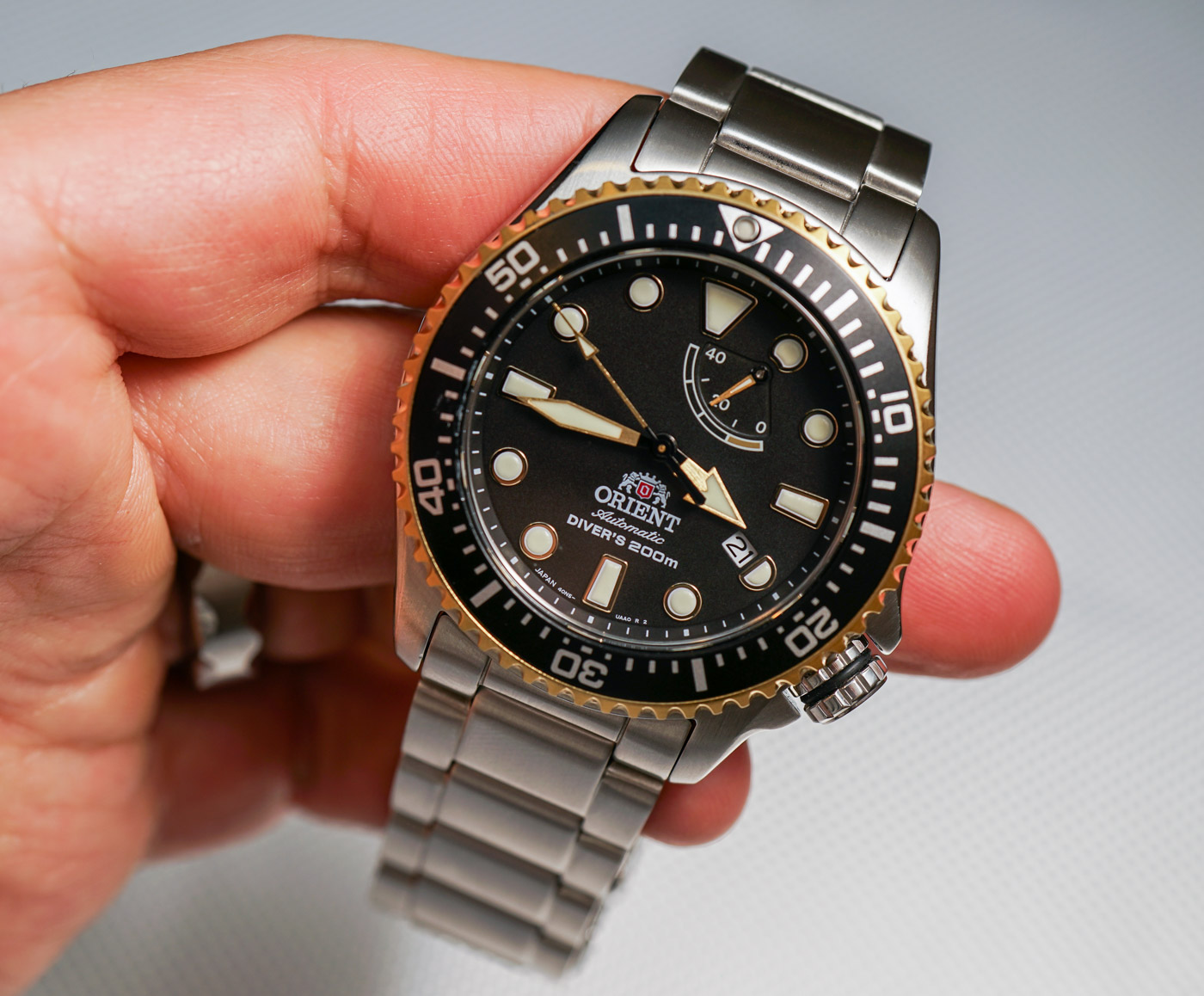
As I said earlier, Orient uses strictly in-house-manufactured movements. The Orient Triton has the Orient Caliber 40N5A Automatic movement inside. This is a hacking and hand-winding movement that ticks away at 21,600BPH. This is the same movement that Orient used in its now-discontinued M-Force collection. Orient makes a point to highlight this movement’s efficiency. This can largely be attributed to the magic level technology Orient has borrowed from Seiko (both brands are owned by the Seiko Epson group). The Triton has a power reserve of 40 hours, which is easily exemplified by the power reserve complication. I’m not sure how necessary this is for an automatic movement, but it is a nice touch. Some might argue that it causes some busyness on the dial, but that’s going to be a personal decision.

All in all, I think Orient has created something here that will cater to a very competitive customer base. “Value” in the context of watches can be a bit of a subjective concept. Some folks will see the value in a piece based on its resale value, originality, or functionality. I tend to focus on the later, I’ve always wanted my watches to do the most and perform the best based on their price-point’s competition. The design of the Triton, however, will be somewhat polarizing. The addition of the power reserve clutters the dial slightly and, in my opinion, does not offer much added functionality. The size of the Triton suits my taste and should wear very nicely for most folks at 13.6mm-thick. There are some other competitive options one could consider, such as a Seiko Sumo reviewed here, or perhaps an Orient Mako II, if you’d like to spend a little less. The Orient Triton Diver Watch is available in black (ref. RA-EL0001B00A), blue ( ref. RA-EL0002L00A), and two-toned pictured here (ref. RA-EL0003B00A). The black and blue are priced at $710, and the two-toned is $750. For additional details and information, visit orientwatchusa.com

